Abstract
1. A constant specific activity of radioactively labelled amino acids was maintained in the circulation by means of a new technique devised for this purpose. This has made it possible to measure accurately the entry rates of amino acids into the brain in vivo. 2. The rates of entry into the brain of seven nutritionally non-essential amino acids were measured. 3. Glycine and proline enter the brain relatively slowly, at rates comparable to those of amino acids which are not normally found in the blood. Thus their entry is due mainly if not entirely to passive diffusion. 4. Serine (which is used by the brain to make glycine) and alanine (which is used to make glutamate and aspartate) enter the brain as rapidly as the essential amino acids and thus, although not essential for the body as a whole, appear to be essential for the brain. 5. It is suggested that those amino acids that the brain is able to synthesize have low rates of entry, even though they are present at high concentrations in the plasma, but that the transport systems for those amino acids that are not synthesized in the brain ensure rapid entry at rates that are related to the rates of cerebral utilization.
Full text
PDF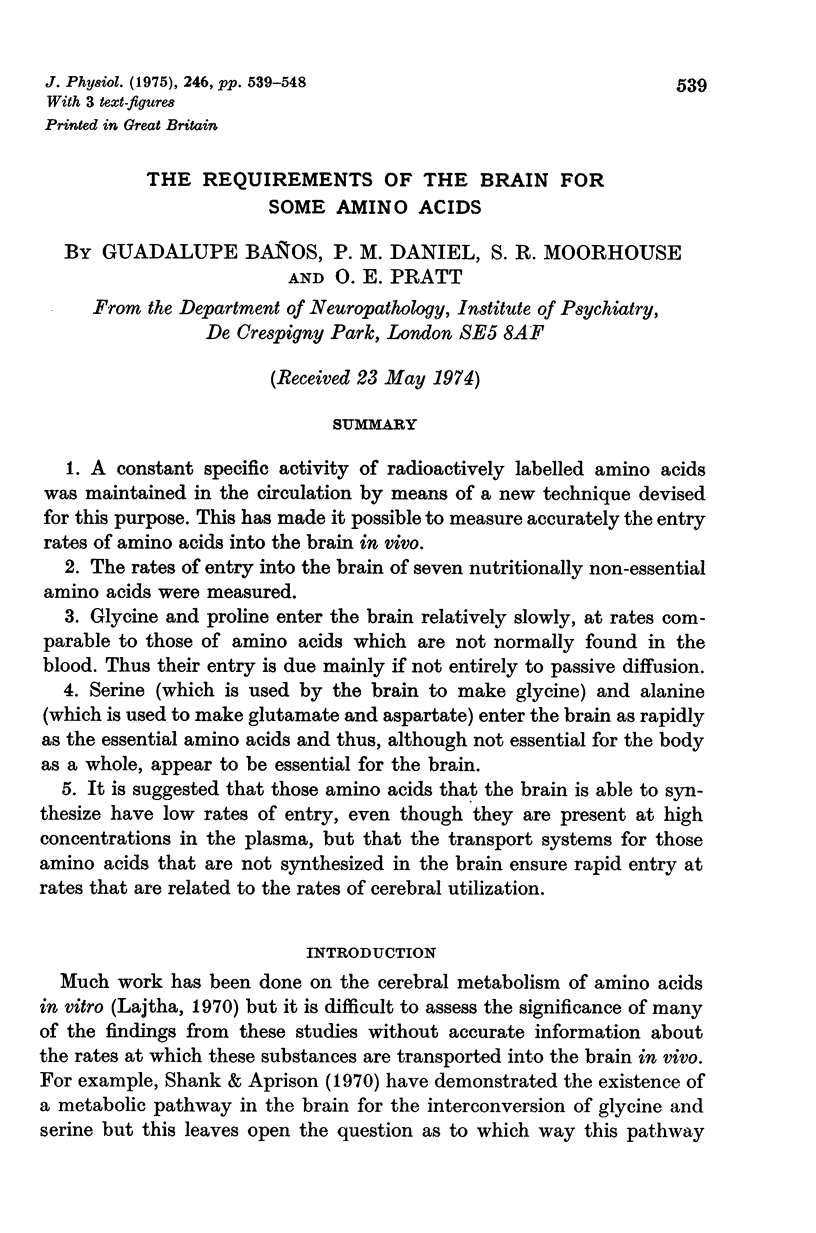
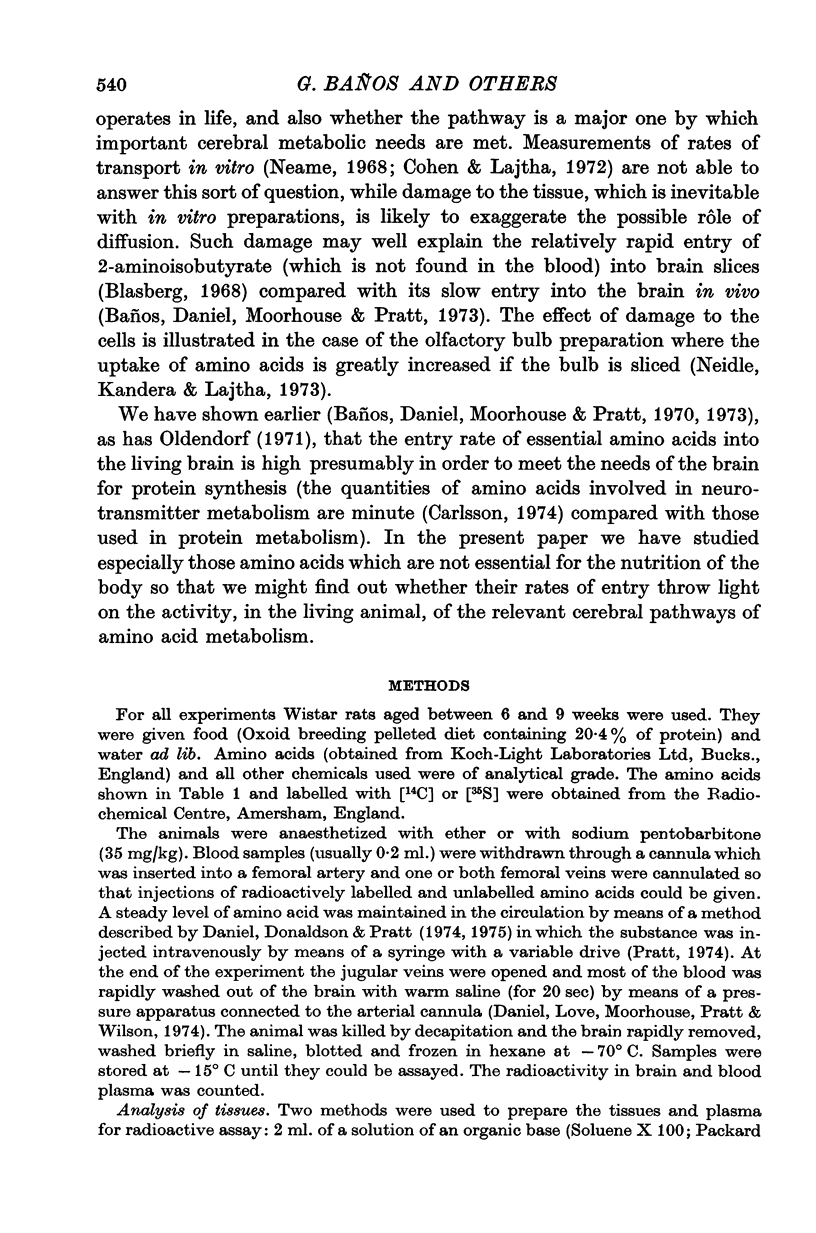
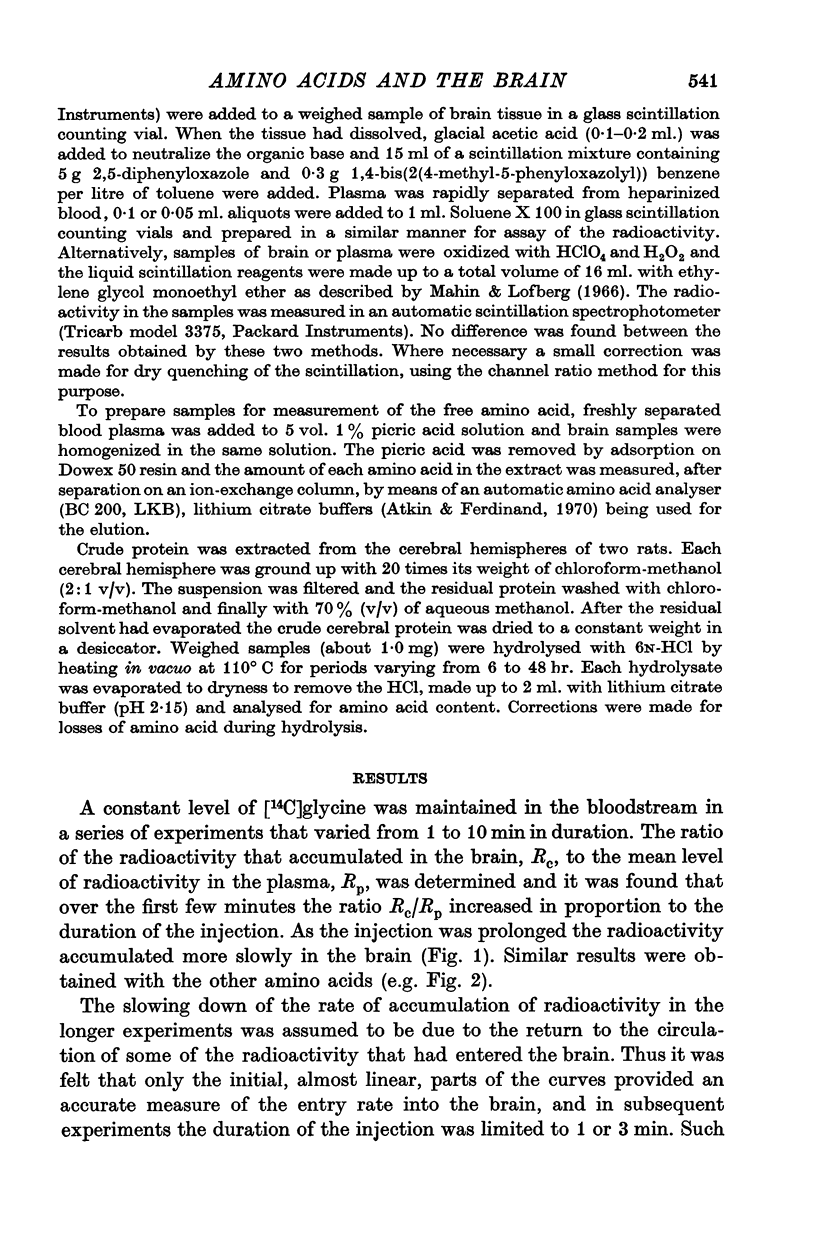
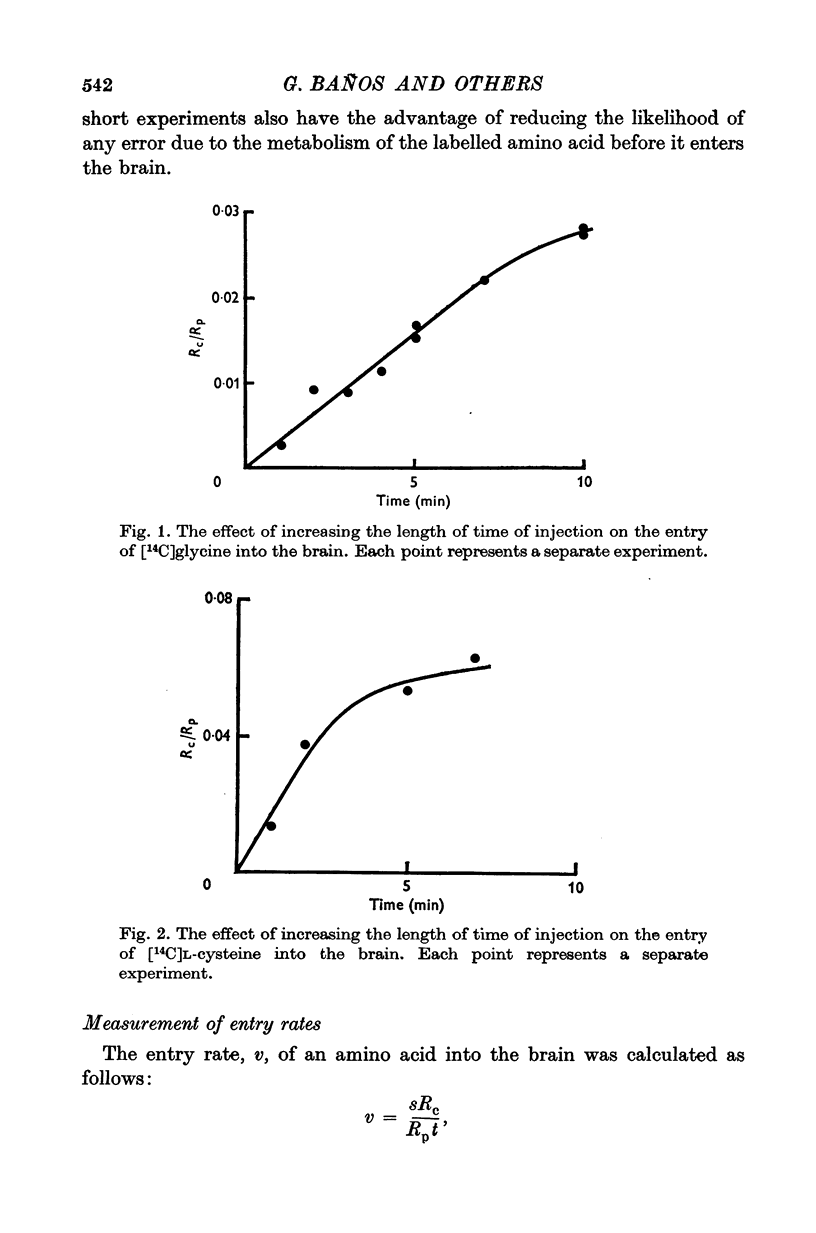

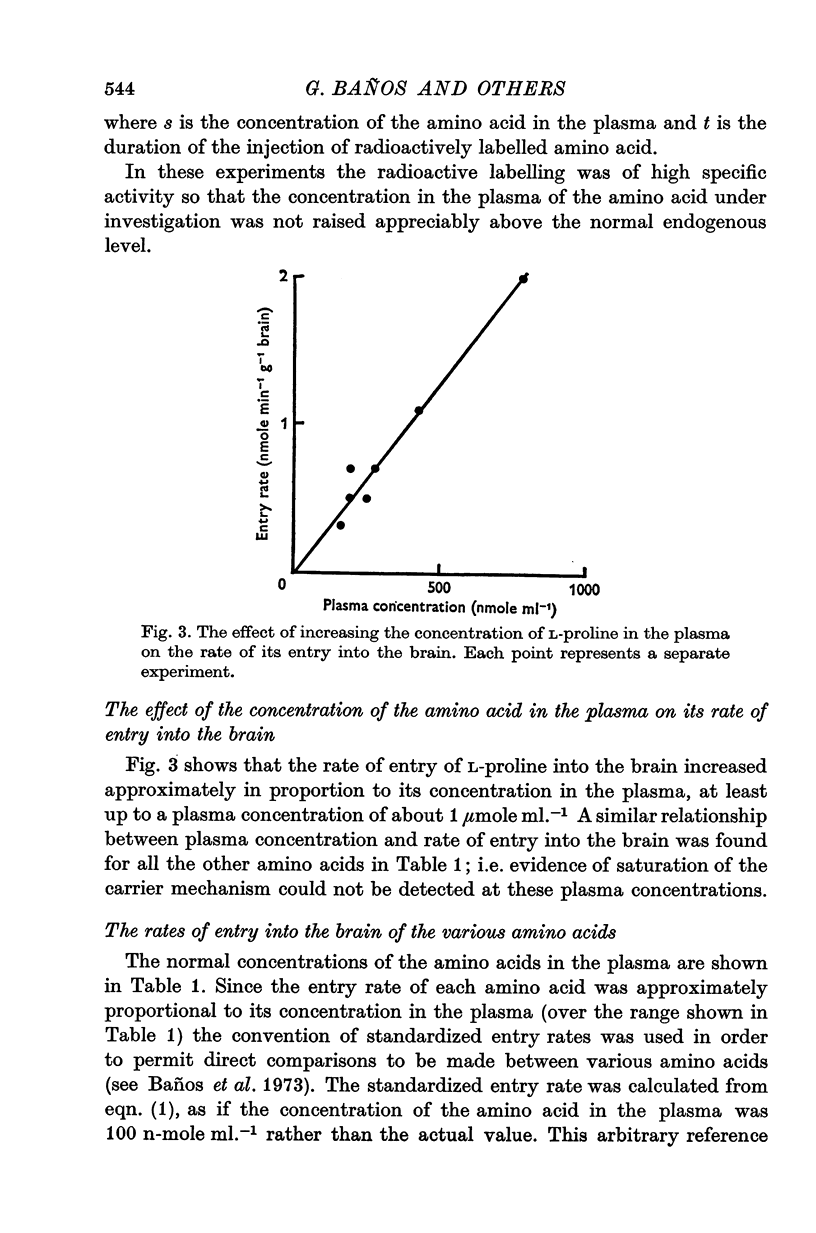
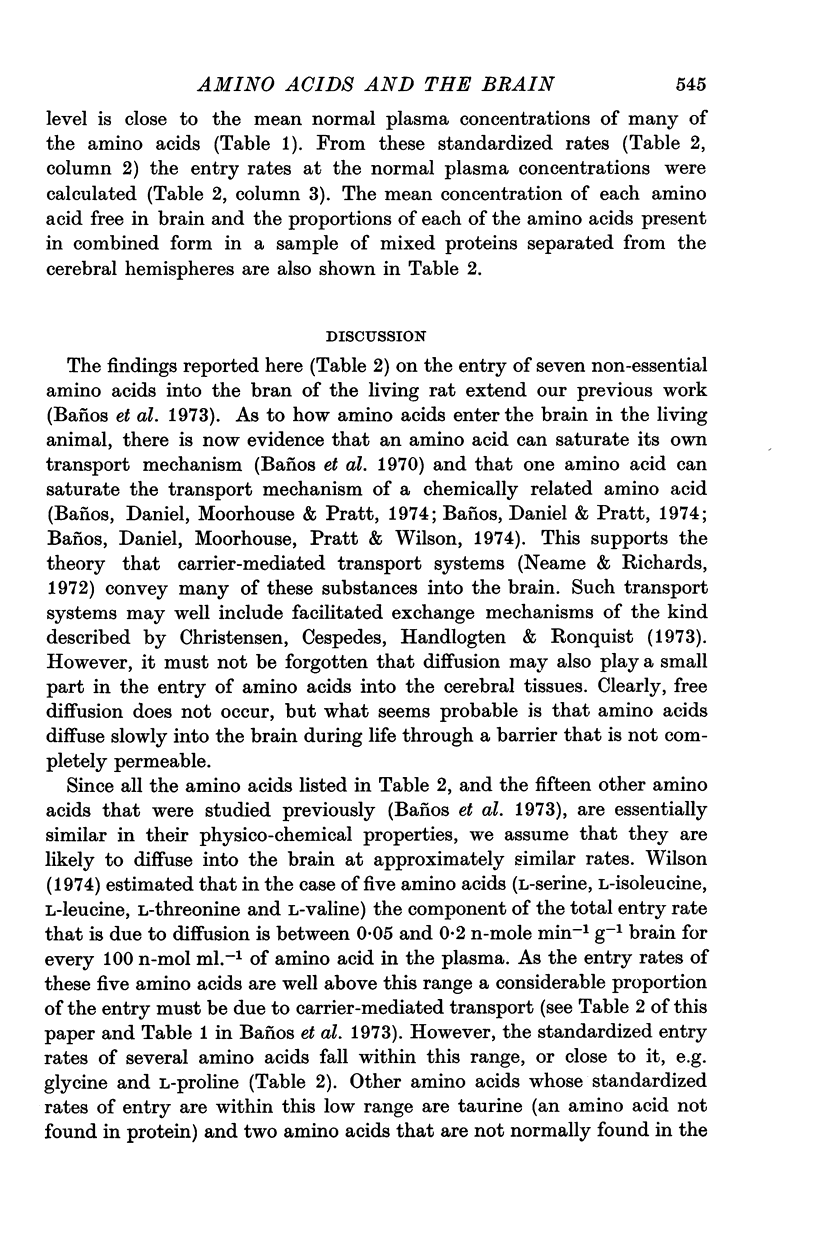
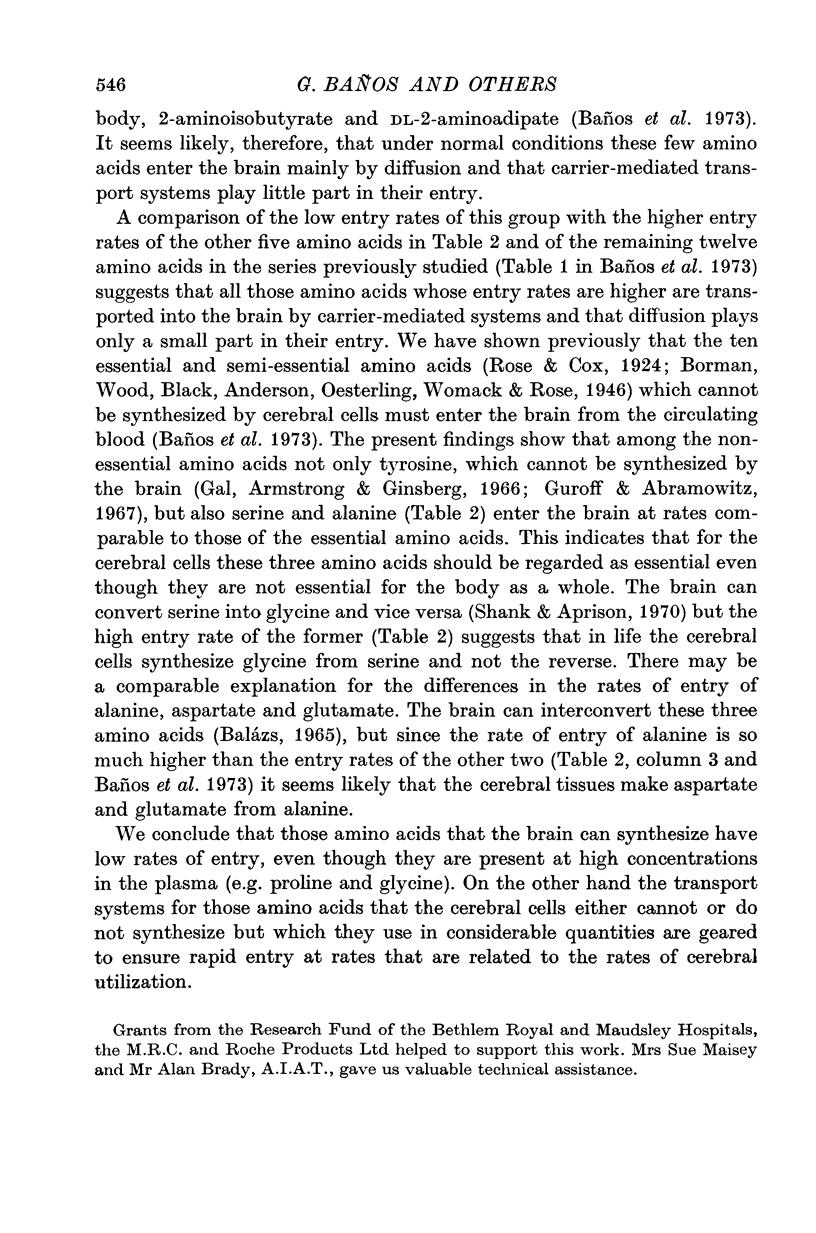


Selected References
These references are in PubMed. This may not be the complete list of references from this article.
- Atkin G. E., Ferdinand W. Accelerated amino acid analysis: studies on the use of lithium citrate buffers and the effect of n-propanol, in the analysis of physiological fluids and protein hydrolyzates. Anal Biochem. 1970 Dec;38(2):313–329. doi: 10.1016/0003-2697(70)90456-2. [DOI] [PubMed] [Google Scholar]
- BALAZS R. CONTROL OF GLUTAMATE METABOLISM. THE EFFECT OF PYRUVATE. J Neurochem. 1965 Feb;12:63–76. doi: 10.1111/j.1471-4159.1965.tb11940.x. [DOI] [PubMed] [Google Scholar]
- Baños G., Daniel P. M., Moorhouse S. R., Pratt O. E. Inhibition of entry of some amino acids into the brain, with observations on mental retardation in the aminoacidurias. Psychol Med. 1974 Aug;4(3):262–269. doi: 10.1017/s003329170004294x. [DOI] [PubMed] [Google Scholar]
- Baños G., Daniel P. M., Moorhouse S. R., Pratt O. E. The influx of amino acids into the brain of the rat in vivo: the essential compared with some non-essential amino acids. Proc R Soc Lond B Biol Sci. 1973 Feb 27;183(1070):59–70. doi: 10.1098/rspb.1973.0004. [DOI] [PubMed] [Google Scholar]
- Baños G., Daniel P. M., Moorhouse S. R., Pratt O. E. The passage of amino acids into the rat's brain. J Physiol. 1970 Sep;210(2):149P–149P. [PubMed] [Google Scholar]
- Baños G., Daniel P. M., Moorhouse S. R., Pratt O. E., Wilson P. Inhibition of neutral amino acid entry into the brain of the rat in vivo. J Physiol. 1974 Mar;237(2):22P–23P. [PubMed] [Google Scholar]
- Baños G., Daniel P. M., Pratt O. E. Saturation of a shared mechanism which transports L-arginine and L-lysine into the brain of the living rat. J Physiol. 1974 Jan;236(1):29–41. doi: 10.1113/jphysiol.1974.sp010420. [DOI] [PMC free article] [PubMed] [Google Scholar]
- Blasberg R. G. Specificity of cerebral amino acid transport: a kinetic analysis. Prog Brain Res. 1968;29:245–258. doi: 10.1016/S0079-6123(08)64160-6. [DOI] [PubMed] [Google Scholar]
- Christensen H. N., de Cespedes C., Handlogten M. E., Ronquist G. Energization of amino acid transport, studied for the Ehrlich ascites tumor cell. Biochim Biophys Acta. 1973 Dec 28;300(4):487–522. doi: 10.1016/0304-4157(73)90017-8. [DOI] [PubMed] [Google Scholar]
- Daniel P. M., Donaldson J., Pratt O. E. The rapid achievement and maintenance of a steady level of an injected substance in the blood plasma. J Physiol. 1974 Mar;237(2):8P–9P. [PubMed] [Google Scholar]
- Daniel P. M., Love E. R., Moorhouse S. R., Pratt O. E., Wilson P. A method for rapidly washing the blood out of an organ or tissue of the anaesthetized living animal. J Physiol. 1974 Mar;237(2):11P–12P. [PubMed] [Google Scholar]
- GAITONDE M. K., RICHTER D. The metabolic activity of the proteins of the brain. Proc R Soc Lond B Biol Sci. 1956 Mar 27;144(918):83–99. doi: 10.1098/rspb.1956.0019. [DOI] [PubMed] [Google Scholar]
- Gal E. M., Armstrong J. C., Ginsberg B. The nature of in vitro hydroxylation of L-tryptophan by brain tissue. J Neurochem. 1966 Aug;13(8):643–654. doi: 10.1111/j.1471-4159.1966.tb09872.x. [DOI] [PubMed] [Google Scholar]
- Guroff G., Abramowitz A. A simple radioisotope assay for phenylalanine hydroxylase. Anal Biochem. 1967 Jun;19(3):548–555. doi: 10.1016/0003-2697(67)90245-x. [DOI] [PubMed] [Google Scholar]
- Levin B. Hereditary metabolic disorders of the urea cycle. Adv Clin Chem. 1971;14:65–143. doi: 10.1016/s0065-2423(08)60145-6. [DOI] [PubMed] [Google Scholar]
- Neidle A., Kandera J., Lajtha A. The uptake of amino acids by the intact olfactory bulb of the mouse: a comparison with tissue slice preparations. J Neurochem. 1973 Apr;20(4):1181–1193. doi: 10.1111/j.1471-4159.1973.tb00087.x. [DOI] [PubMed] [Google Scholar]
- Oldendorf W. H. Brain uptake of radiolabeled amino acids, amines, and hexoses after arterial injection. Am J Physiol. 1971 Dec;221(6):1629–1639. doi: 10.1152/ajplegacy.1971.221.6.1629. [DOI] [PubMed] [Google Scholar]
- Shank R. P., Aprison M. H. The metabolism in vivo of glycine and serine in eight areas of the rat central nervous system. J Neurochem. 1970 Oct;17(10):1461–1475. doi: 10.1111/j.1471-4159.1970.tb00513.x. [DOI] [PubMed] [Google Scholar]


